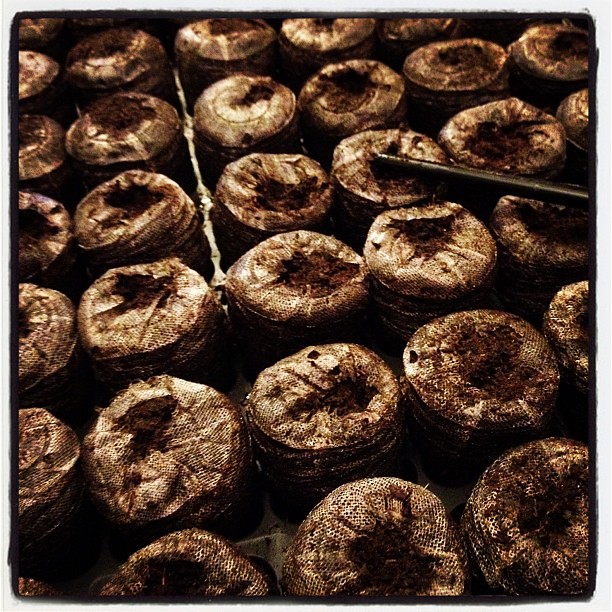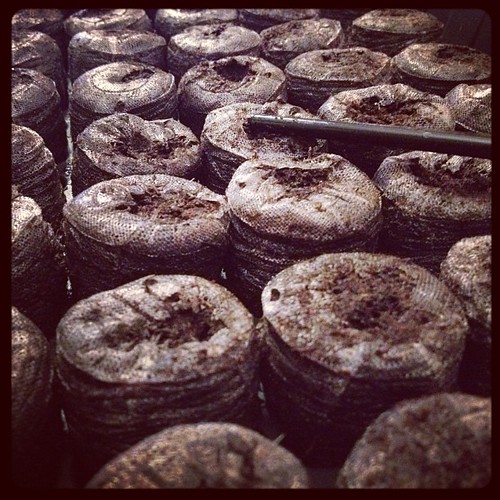Last year we purchased a house which had a yard. Finally, we had a yard! We painted and remodeled part of the house in February and March. In April, we worked on getting the back yard situated. In May, I began putting raised beds together and buying bags after bags after bags of soil and compost to fill the aforementioned raised beds. Finally, at the end of May, we were ready to plant. We didn't start our main crops from seed, though. We made trips to our local nursery and purchased dozens of plants - tomatoes, squash, zucchini, bell peppers, ancho peppers, and cucumbers. The rest (onions, beans, herbs, etc.) we started in the ground with seed. When the season was over and our harvest was, well, harvested, we looked at receipts and realized how much money we spent on plants. We didn't expect to lower our grocery budget enough to offset our startup expenses (wood, hardware, soil, and plants) but the amount of money spent on plants really hurt our ROI (Return on Investment).
This year, we opted to start everything (and I mean EVERYTHING!) from seed. Using convenient Jiffy pellets (available at your local nursery or big box retailer), hot water, and a chopstick, I set off planting tomatoes, squash, cukes, lettuce, cabbage, broccoli, brussel sprouts, and peppers. 144 pellets used. Now the adventure begins. A couple of tips to anyone wanting to start their own garden from seed (from what I've gathered from the interwebz and several books):
- Buy quality seeds. The $.99 pack at Wally World might look attractive to the budget, but you'll get better seed by buying from a seed company (like Burpee, Gardens Alive, etc.) or your local nursery. You may pay 2-3 times the price but you'll find you get MORE seed (which you can save for 2-3 years depending on the type) and that you'll better germination rates (which means you will use LESS seed in the long run).
- Plant 20 - 50% more than you plan on putting out. Even with the best seed, the germination rate is not 100%. You will have seeds that won't sprout. Also, not every seed that sprouts will survive. Planting additional seeds will ensure that you have what you need...and if you have extra plants, you can plant them or give them away to friends (you know...encourage them to do some gardening and eat healthier at the same time!).
- Keep your "plantings" warm until they begin sprouting. It was cold here today and, while we plan on using grow lights in the garage once they sprout, they won't germinate unless they are between 65-80 degrees (depending on the seed). A good place to put them is on top of the fridge. It's usually nice and toasty up there and will help create a perfect environment for your future crops to begin their life cycle.
- Make sure your containers are covered and that your pellets stay moist. The Jiffy "greenhouses" have a top that we keep on them. Not only does this keep the pellets moist, it also helps keep them warm. Once they sprout and are as tall as the top, you can prop it open or even take it off and put it in the sun (if you are lucky to have a place inside with both good sunlight and storage for seedlings) or under growlights.
We will see how they begin growing over the next weeks and, hopefully, we'll put them out the first weekend in May!



No comments:
Post a Comment